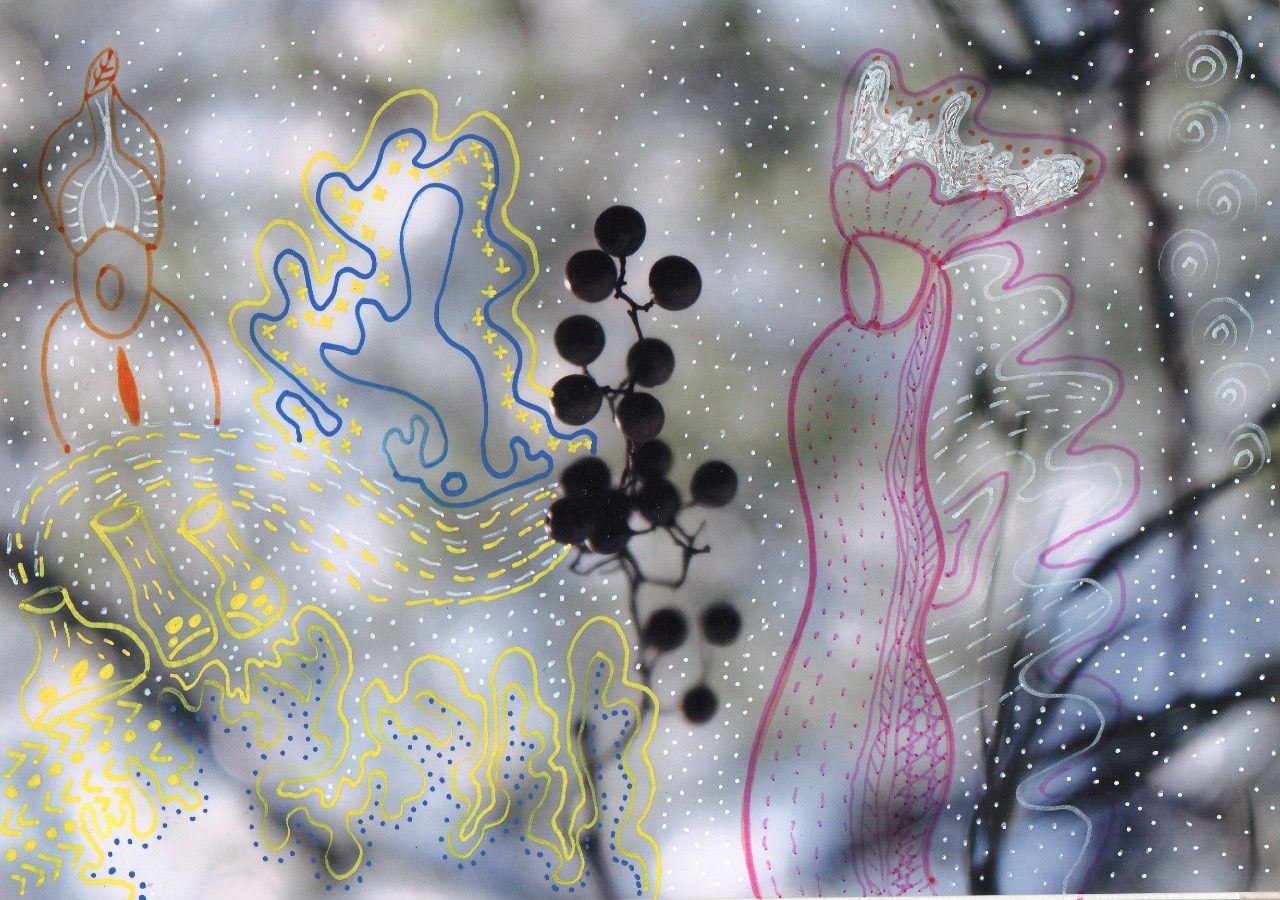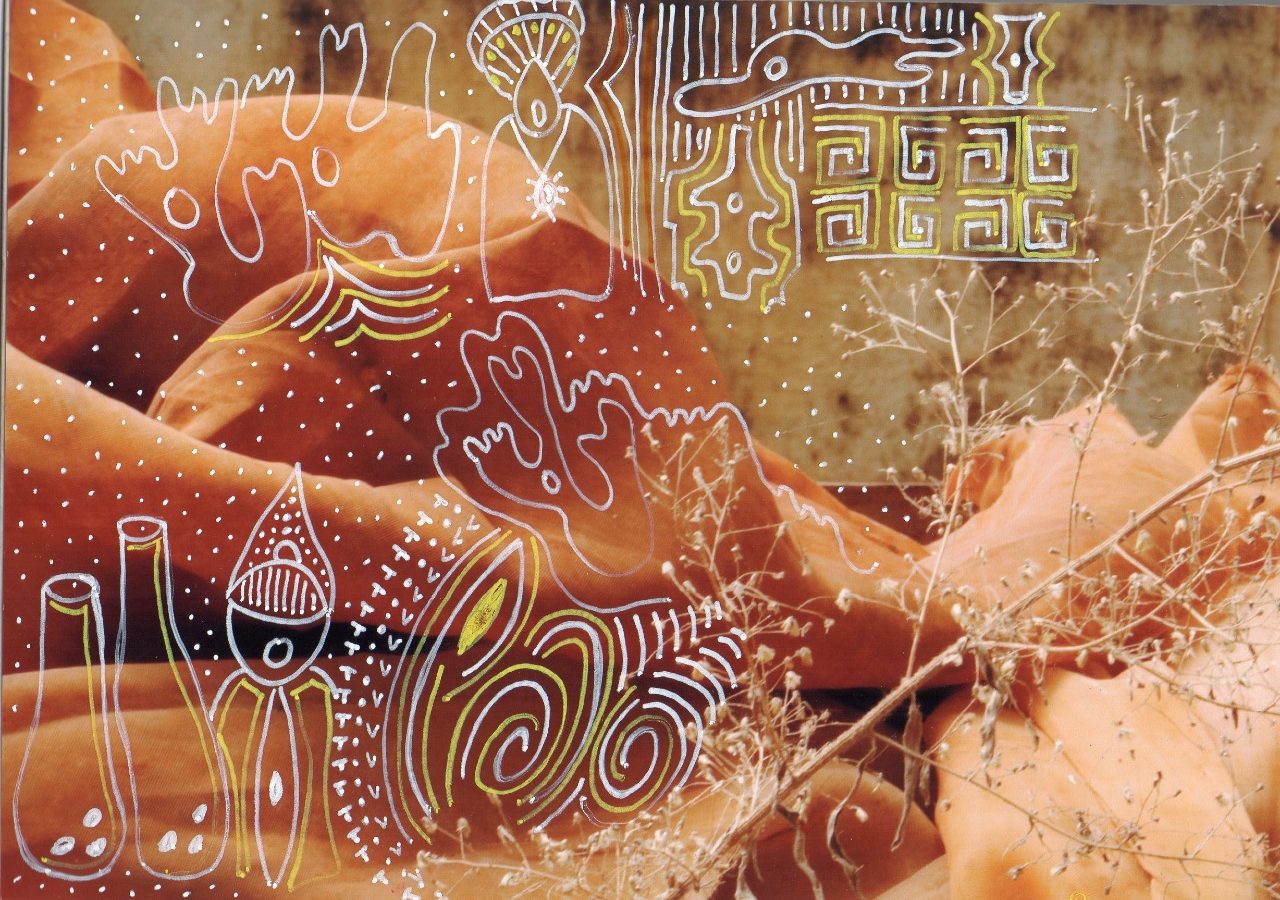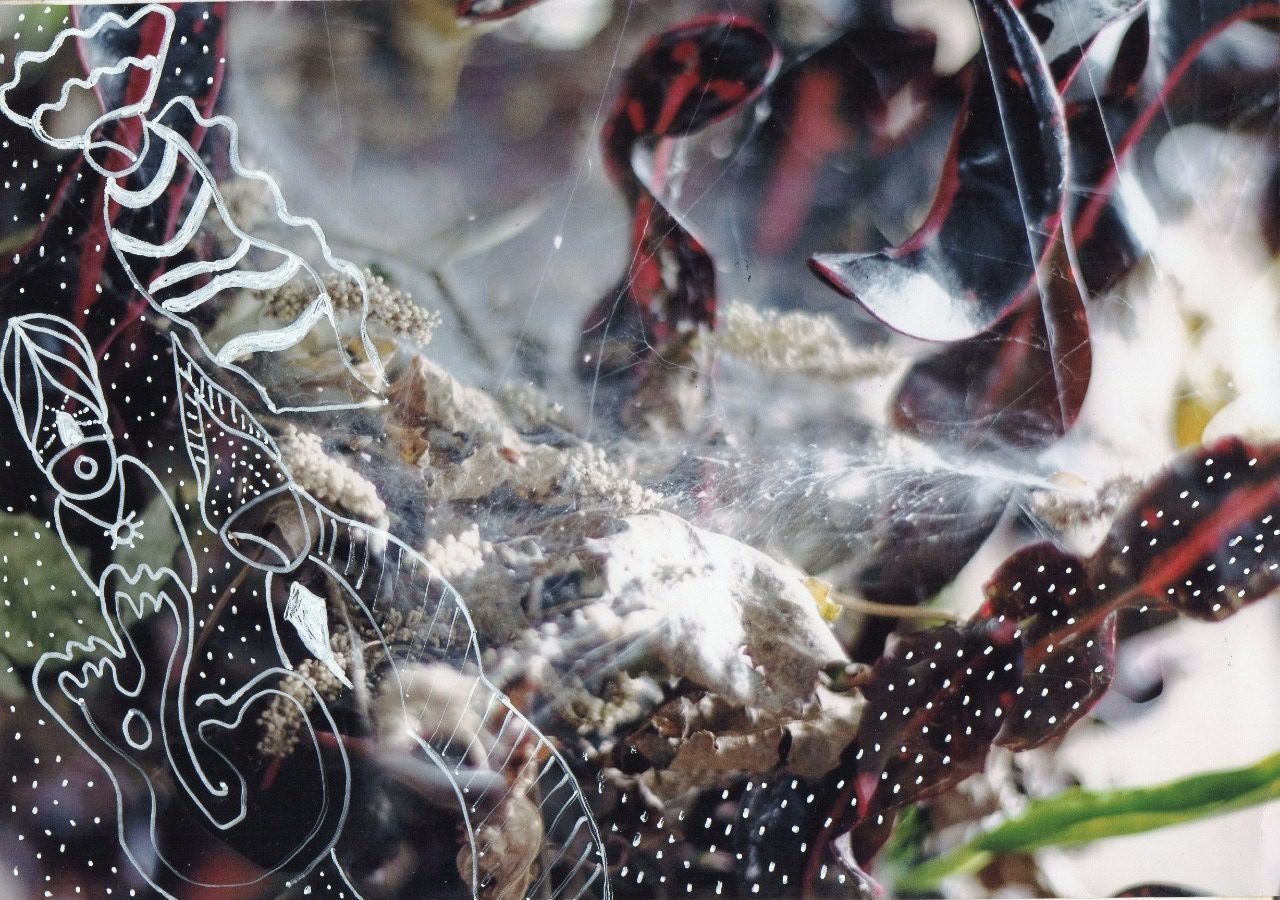Political co-errancy with the image: Messages from the people of light and whispers.

*
If there was something to correct, it would be a certain human tendency to wish to occupy the centre. An optical centre, like that of a well-polished lens. However, the world, like the periphery of a lens, is pure imperfection. It is pure anomaly, where there is no place for transcendental and pre-established rules or regulations. The world is a pure process of immanent erring and emergence. Of course, here we are talking about a world which is more than human, a world that embraces, rather than an anthropic principle, a cinematographic tendency as a cosmological condition, where we are images in between images in intervals. This world, which does not have a pre-conceived image of itself, and which instead infinitely breaks and deviates, puts an end to the possibility of correction as we would no longer be limited by human-imposed logics of judgement. This world, without limits, rejects the centrality of the anthropic as the privileged image and understands it as one more image amongst many, any other image. A world as a constantly criss-crossing re(de)composition[1] of image flows. Co-errancy with the image as a genetic de-foundation. Co-inhabiting the images’ transits which radiate a nachleben as a possible continuation by other means, an invention of inadvertent mutual inclusions. This politics, that makes worlds from the world, other-worlds from the worlds, is in any case an open and inclusive cosmopolitics which favours the establishment of more-than-human modes of existence, cinematic modes of existence or, as they like to be called, the people of light and whispers. People who in these lines, since we are still too humane humans, leave us messages that, from the human point of view, could be heard as gestures of political correctness.
The people of light and whispers are migrant thinking, they are the proliferation of ima(r)gins[2]. Images opening other-margins for the unnoticed, calling for a fresh intake of breath. Images that become a fragile margin, like a non-outline, or that make any desire for an outline marginal. A third margin for the unrestricted flow that they carry and embody. The people of light and whispers, nomadic, are everywhere, they are within us, and we are within them. They are in cinema and therefore cinema is the in-between place that interweaves worlds through which this people cruise across. People of light and whispers, cinematic link occurring in-between, cosmogenetic connectivity, medium of proliferation of ima(r)ginal relations. A people that resist the enclosure of forms, since being just an image and not a just image – as Jean-Luc Godard would say –, they are dignified and never allow themselves to be subdued by a power, by despotism or a human will, all too human, warped by the idea of ownership. It is pure power of resistance, which cannot be performed, conquered, or colonised, but which we must let ourselves be possessed by, in order to become its channel and medium. In other words, the people of light and whispers are the permeable, passenger condition – transparent and membranous – so that all which is living does not stall or stagnate. A migrant people in as such they are in interstitial development and at intervals with other peoples, making everything a screen, a surface through which they can continue and call themselves networks of re(de)composition. They continue, manifesting themselves in bodies, in writing, in these lines… That is to say, they advance through life affirming the living as a cinematographic gesture and, at the same time, they exceed and overflow cinema itself. Or, if you like, they make cinema a metamorphosis and metamorphosis a cinematographic process; a pluriverse in constant formation! A womb-world that is a cosmic cinematograph of which the people of light and whispers are the guardian.
The people of light and whispers would have a first message to offer us or, in any case, another invite, that in the West – unlike other extra-modern peoples – we have rejected many times. Making an alliance with it, in which the human may become between-human like an ima(r)ginal re(de)composition.
This is a sort of premise to be able to open ourselves to listening in the face of the co-errancy raised by the following proposals of this people, proposals which they ask us to embrace in order to, who knows, declare a cosmopolitics of the image.

*
- Perceiving and composing the image is an open process awash with uncertainties making it an illusion, an overlapping of dimensions, where one does not see without feeling the materiality of the support creating the necessary opacity, so that seeing is not revealing, but arranging perceptive intervals.
- An image, however irrational it may seem, always resonates and reverberates with another; there is a texture that passes from one to the other. A concrete and tangible texture, but which also behaves as an imperceptible aura and halo.
- The image always multiplies the surfaces, the screens through which it passes. Doubling them, multiplying them, shaping them into a patchwork quilt that never stops stringing and weaving itself together and which, therefore, is always a cradled baby, always insisting on its state of infancy.
- The power of the image does not perceive or judge origins. Images that are found, bygone, newly conceived, altered, worn, torn, painted… Images in evolution, images in progress, images which call themselves pure impermanence, which, like the wind, allow themselves to be felt without their final form being identifiable. The image lacks essence.
- The image in its audio dimension must neither confirm nor verify anything, its aurality must be the place of mystery, where the senses become dulled, where sensations pass unnoticed, where meaning remains open and is flung in unthinkable directions.
- The image in its opening and evolution, in its vaporousness and porosity, in its transience, must always maintain a sinister dimension (of unheimlich). A dimension where matter oscillates and everything is mixed, where the image is the coexistence of uncertain textures.
- Flashes of light, however the power is always in the sound, in the whispers, which do not allow themselves to be overpowered by what is visible in the image. Disparate overlaps between what is seen and what is heard, where the aim is to ritualise the image.
- The image that is ritualised becomes a symbol. Image-symbol, faceless image. That is to say, image-mask, which never notices itself and much less reality, and that, on the contrary, becomes a leakage of world(s).
- Insisting on the image-mask which always leaves the future open by secreting degrees of darkness. Shadows of other-sounds, shadows of multi-relationships and multi-sensorialities, where the secret of the world is kept in the midst of whispers.
- The image-nature must always return, regardless of its scale. Sometimes its forces are microcosmic. A bee, a spider that feed the image. Composing, with it and between reflections, small universes.
- An image never comes alone; it is always a cluster. Images. Images that compose small universes that do not need a hundred different images to be rich. Starting then from a limited number and variety of images. Not much more than that. Not forgetting that the secret, the whisper, is in the difference that emerges from repetition.
- Making the image a fertile and rich occasion from a structural minimalism. Small universes (of imagery) from a succinct palette of elements, where the succinct is multiplied in the diffusion and noisiness of the sounds. Whispering laughter.
- Insisting then on the establishment of small universes, where the image in its affirmative opacity becomes a surface of resonance, becomes doubt, and is rarefied by being neither clear nor distinct. Pure ambiguous threshold of evocation.
- Suggesting, sketching without defining outlines, as a way to establish the plastic condition of the image, where subtle points of contact between the visible and the audible take place ephemerally and without the possibility of anchorage.
- Like a wild deer in an open field, give the image space. Never try to tame it or want it to say too much. Never try to cage it or force it to speak. Meaning is not its existential condition. It lives to be a vessel, like light in water, to be a means of diffraction. To diffract, its verb of choice. To be a detour, its condition.
- The image as a possibility for the declaration of small universes, which in turn compose a multiverse from cinematographic serialisms. Any series. A series in constant recombination, in repetition and variation. A guiding element in the midst of creative chaos. A secret, a whisper, a flash.
- Experiencing once again the power of the image-mask, of an image that becomes meaningful in repetition and which in turn becomes the driving force of an image-ritornello. The image-ritornello orbiting and creating variable ellipses around the image-mask.
- An ever-latent ambiguity of the image. Shadows, silhouettes, uncertainties, evocations in the visible and audible. The invisible that never ceases to make itself present in the aural exile. Then to let itself be embraced once again by mystery…
- Confirming the image as that which is always on its way, because it never stops nourishing its ambiguity, in which it, the image, is a disruptive invasion that becomes both rejection and membrane at the same time. A rejection of all finitude and membrane for the passage of all possibility. In the middle, there is always an uncertain and mysterious atmosphere of perceptions in constant alteration and variation.
- The image is not only the diffractive and hallucinatory message of the people of light and whispers, but it is also a memory of the future, as the evoked and oracular futurity of all people to come.

*
Ima(r)gining worlds as survival, on the margin of a quantifiable added value, as a limitless margin for the second, third and so many other anarchivable[3] lives of the image in the co-errant meandering of the people of light and whispers, where political correctness could well be understood as the proliferation of Anarchiv(be)ing(s), spectral beings full of imagery that, in their duration, anarchically archive the unarchivable of the event that is the cosmic cinematograph in movement.
Images courtesy of Susana Oliveira Dias
“Oracle” series (2020), Photographs altered with ink
Translation by Katy Carroll
I wish to thank Antonio Carlos Amorin for the inspiring intuition of the notion of ima(r)gin which I have attempted to bring to life in these short lines, as well as Erin Manning for the concept of anarchiving which is adapted here in the form of Anarchiv(be)ing(s).
[1] Term coined by the author to refer to the overlapping co-existence of the processual, connective states of composition, decomposition and recomposition.
[2] Term coined by the author to refer to the simultaneous existence of the image as an image and a margin.
[3] Anarchiving is a concept developed by the philosopher Erin Manning. It refers to the dual nature of material which, in its future and current iterations, is simultaneously anarchic and (in)archivable as it exists and preserves itself while establishing itself as a variation and process.
Sebastian Wiedemann is a Colombian filmmaker-researcher and philosopher, or as he likes to say a practitioner of cinematic modes of experience. His works investigate liminal intersections animated through experimental cinema and philosophy, aware of a possibility for thought-cinema as living poetic ecology, as a possible surface for the affirmation of a Cosmopolitics of Image. His works have screened in venues around the world and have received retrospective shows in Brazil, Colombia, Spain, and Ireland. In 2015 his film Los (De)pendientes was included in Artforum’s list of the best films of the year and in 2017 won the Special Prize of the Jury at Fronteira Film Festival (Brazil). In 2017 his film Abismo was included in film series Ism Ism Ism: Experimental Cinema in Latin America, conceived by Los Angeles Filmforum as part of the Pacific Standard Time: LA/LA initiative. During 2019-2020 his film Obatala Film won several Prizes in Brazil. He is also editor and curator of the online platform Hambre | espacio de cine experimental which focuses on critical experiments seeking dialogue with new tendencies in Latin American avant-garde cinema and where he has edited the books La Radicalidad de la Imagen. Des-bordando latitudes latinoamericanas. Sobre algunos modos del cine experimental (2016) and Pensamientos migrantes: Intersecciones cinematográficas (2020).